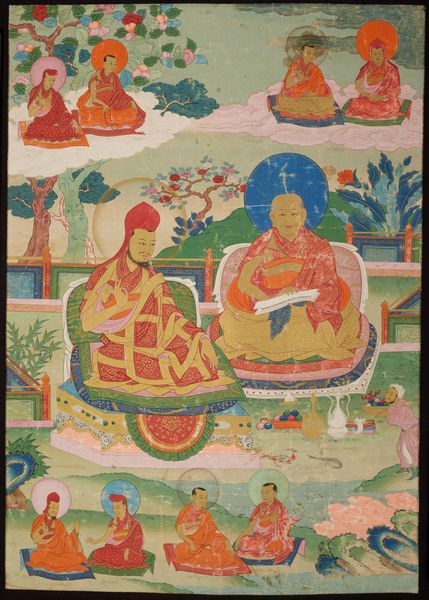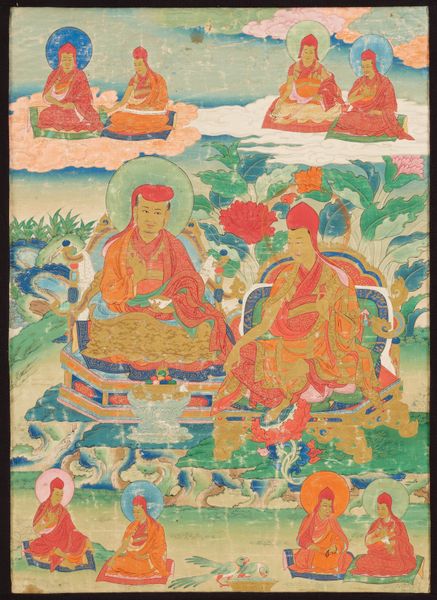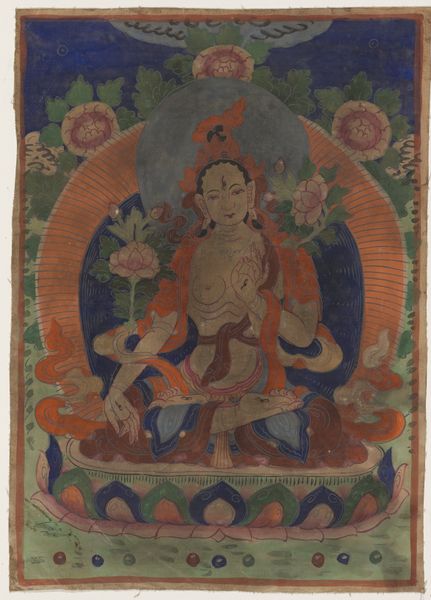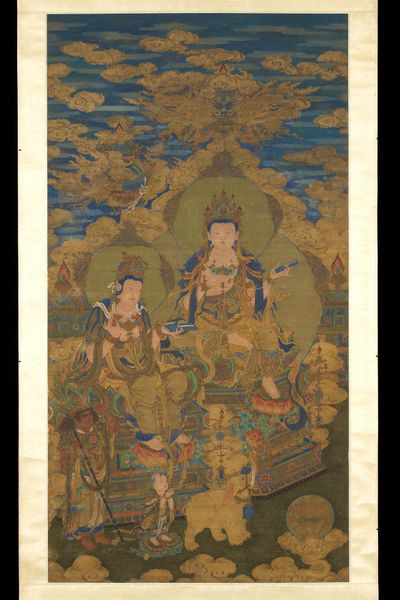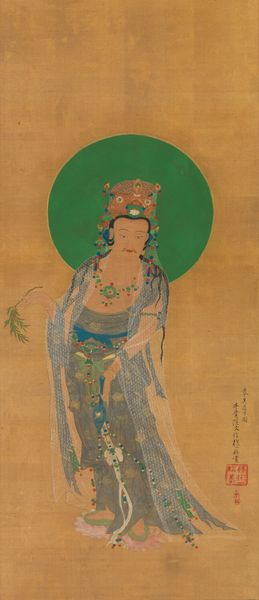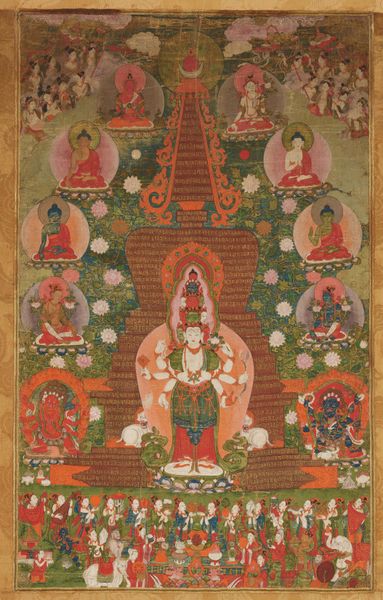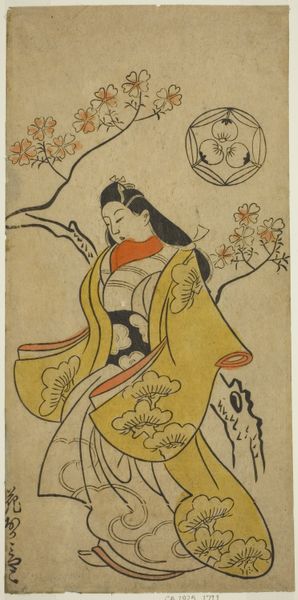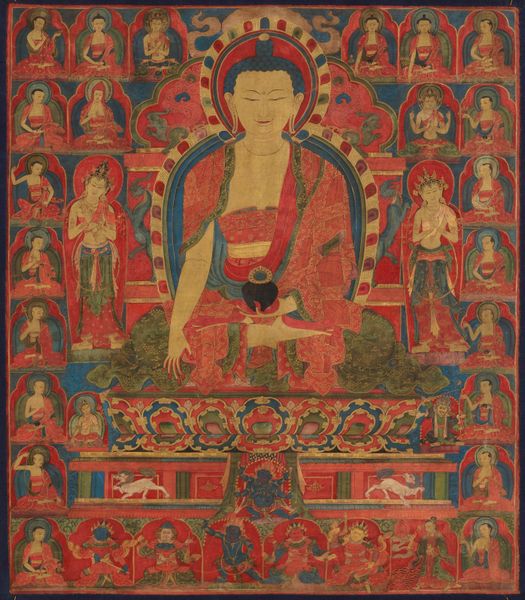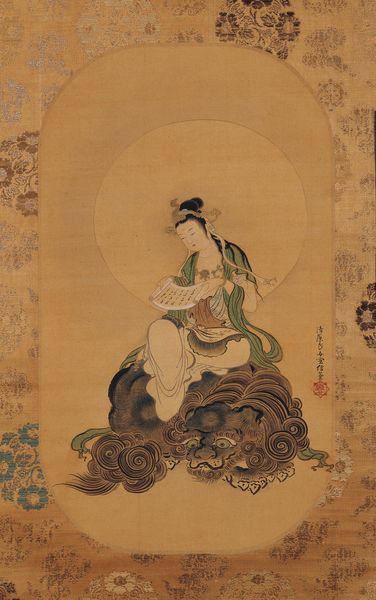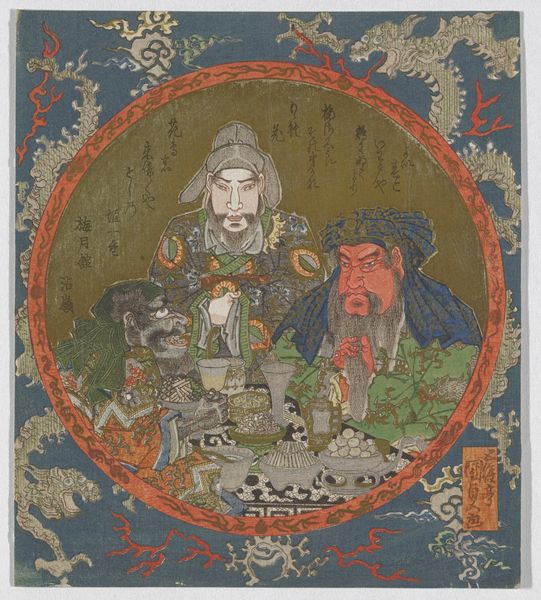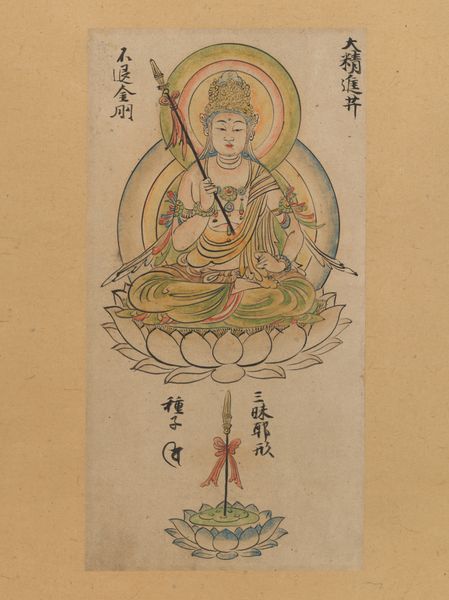
painting, watercolor
#
portrait
#
water colours
#
painting
#
asian-art
#
landscape
#
handmade artwork painting
#
watercolor
#
naive art
#
painting art
Dimensions: 24 1/2 x 17 5/8 in. (62.23 x 44.77 cm) (image)
Copyright: Public Domain
Curator: Here we have an 18th-century watercolor from an anonymous artist called *The Arhat Rob-abyor*, housed at the Minneapolis Institute of Art. Editor: My first impression is the painting has a very gentle quality. The colors are soft, almost faded, which gives it a dreamlike feeling, even a little naive. It’s also surprising how detailed some parts are, especially in contrast to the wash-like quality of the background. Curator: It is fascinating how this image brings together a tradition of representing enlightened Buddhist figures with more earthly, hierarchical concerns. Editor: I am intrigued by the presence of that seated Buddha at the top. What does it signify? And how does that imagery intersect with the landscape motifs, the rocks and water? Curator: The seated Buddha in the upper register symbolizes an aspirational ideal of enlightenment. By framing this figure in a landscape, it serves to connect these powerful, almost untouchable figures, to the viewers understanding of geographic space. Further it demonstrates the intermingling of the physical and the spiritual. The lower figures around the central monk draw upon a sense of institutional, earthly presence as a result. The composition is doing very real representational work to reinforce religious power and knowledge systems. Editor: Yes, I see it now! All of the little figures act as supports around the central Arhat. The landscape acts almost as a visual cue, reminding you of all the interconnectedness that holds it all together. Do you see it functioning as a psychological prompt in that way as well? A visual guidepost? Curator: Certainly. We must remember the way in which images can create feelings of belonging, devotion, and participation in a given culture, and therefore work as propaganda too. What is visible can reinforce established systems. Editor: The softness of the rendering combined with those gentle colors really evokes a sense of serenity and inner peace. It makes me wonder how its creators understood the function of representation and the act of worship. Curator: Absolutely. In some ways, it’s less about accurately depicting reality and more about creating a symbolic representation of those powerful concepts and networks. I'm left thinking about how identity, both individual and collective, gets forged through such symbolic representation and visual display. Editor: Indeed. I'm now struck by how all of this intersects, connecting this figure to something timeless, almost mythic. Thanks for pointing that out.
Comments
minneapolisinstituteofart almost 2 years ago
⋮
In this thanka the arhat Rob-abyor sits on an elaborate throne in a landscape setting and blesses one of his disciples. Rob-abyor holds a sacred text in his left hand, and his throne is supported by a lotus rising from the water. Shakyamuni Buddha, in the earth-touching gesture, occupies the upper left-hand corner. Through meditation, an arhat releases himself from worldly existence and thus will enter Nirvana upon the death of his physical body. The cult of the arhat, particularly sets of sixteen arhats as they are often represented, originated in India but became especially popular in Tibet and China. This thanka from eastern Tibet shows the strong influence of Chinese painting in its landscape composition, lacquered throne and patterned lotus pedestal. A Chinese mythological animal of good fortune (ch’i-lin), grasping a flower in its mouth, swims across the water in the lower right-hand corner.
Join the conversation
Join millions of artists and users on Artera today and experience the ultimate creative platform.

